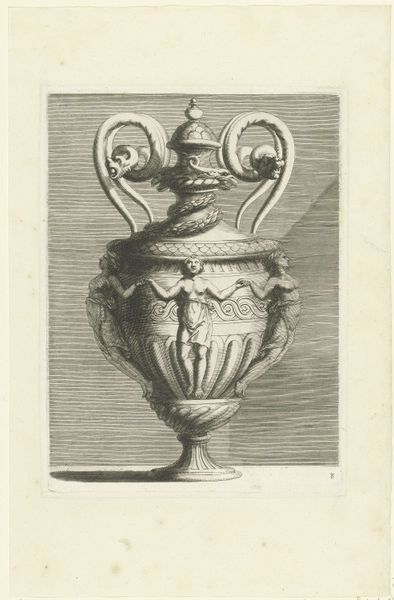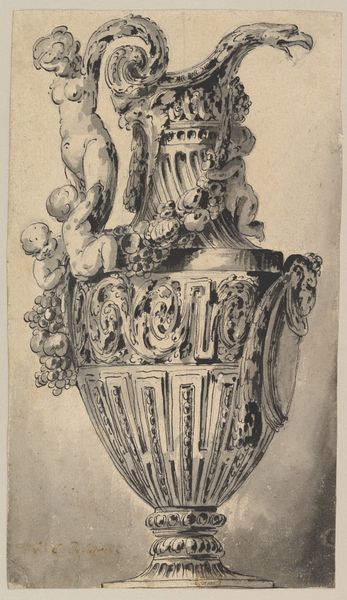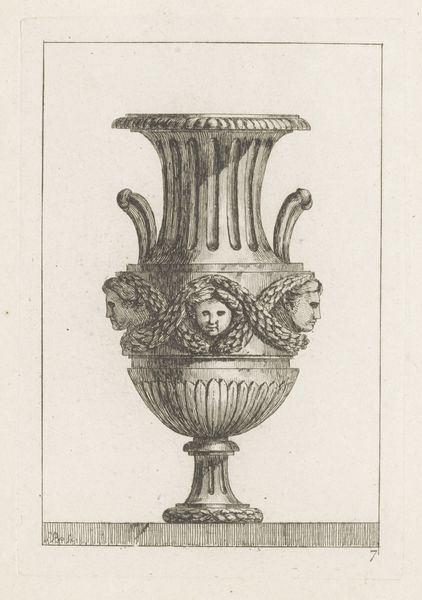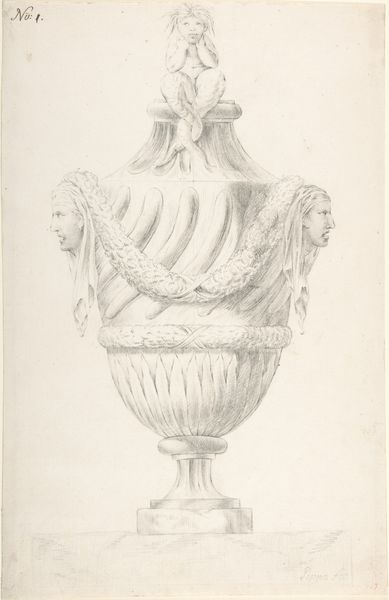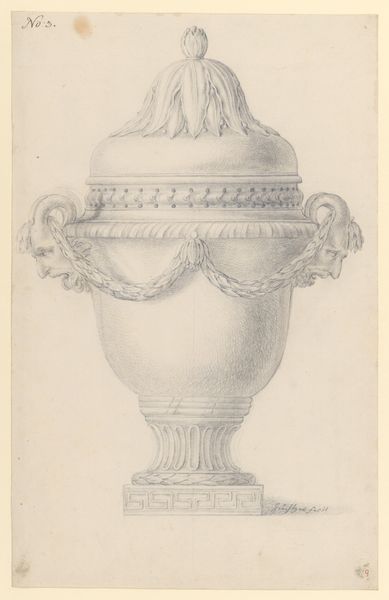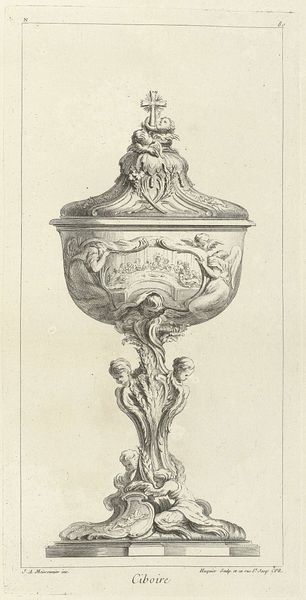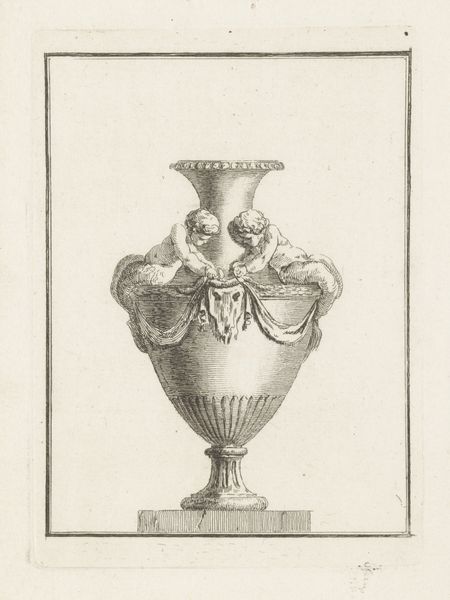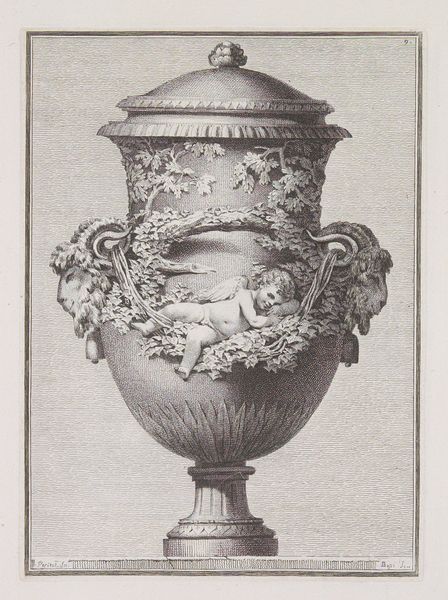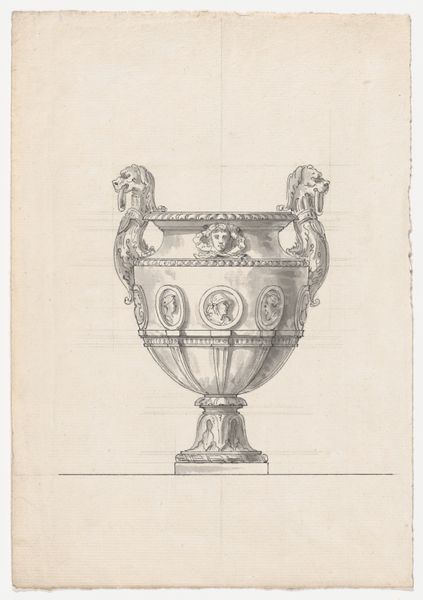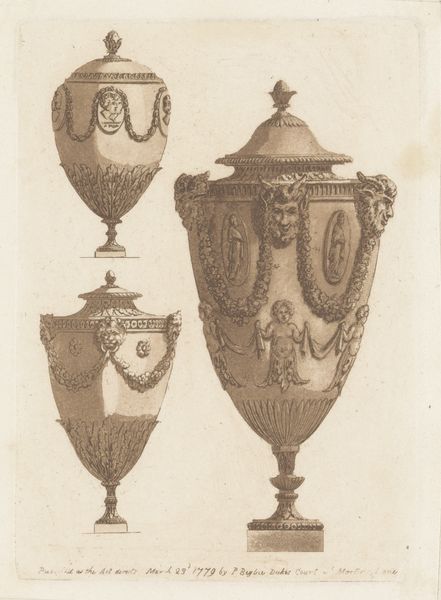
Dimensions: 9 9/16 x 5 9/16 in. (24.3 x 14.1 cm)
Copyright: Public Domain
Jean Charles Delafosse created this design for a ewer with pen and gray wash in France, likely around the 1760s or 70s. The drawing reflects the prevailing taste for neoclassical forms, seen in its symmetrical shape and ornamentation. The ewer's design, though intended for a domestic object, incorporates complex iconography. Note the figures adorning the top – a nude female and a cherubic figure, intertwined with serpentine forms. These recall classical mythology and speak to the period's fascination with antiquity, fueled by archaeological discoveries. Yet, Delafosse's design transcends mere imitation. It reflects a broader cultural phenomenon – the adaptation of classical motifs to legitimize and embellish the aristocratic lifestyle. The drawing itself suggests a particular institutional context. Delafosse was an ornamental engraver and architect, producing numerous designs for other artists and artisans to follow. The drawing testifies to the division of labor characteristic of the decorative arts during this period. Further investigation into the patronage networks and workshop practices of 18th-century France would shed more light on this intriguing design.
Comments
No comments
Be the first to comment and join the conversation on the ultimate creative platform.

